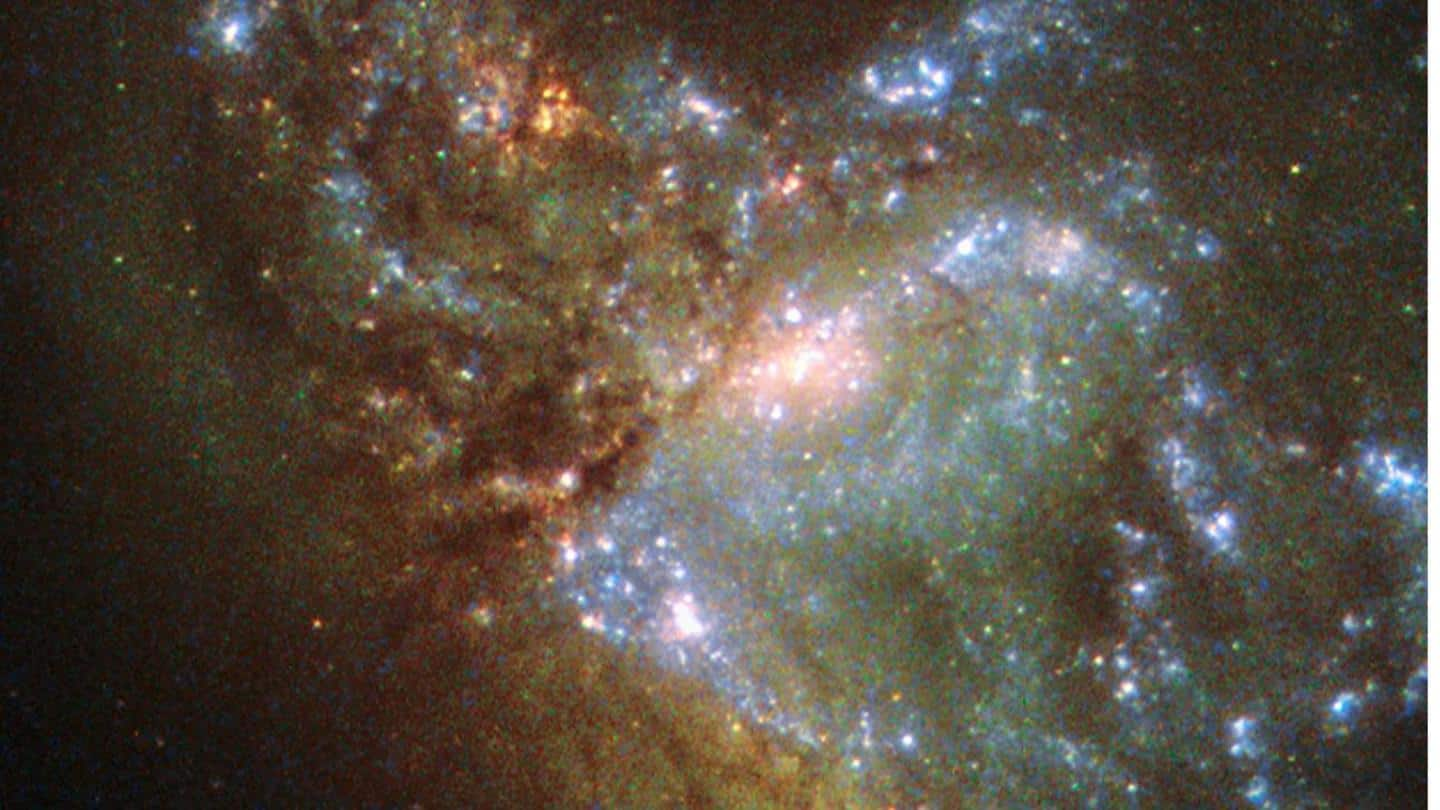
NASA's James Webb telescope reveals 'cosmic knot' in early universe
What's the story
NASA's James Webb Space Telescope (JWST) has captured a new image that points to a cluster of galaxies forming around a bright red quasar. The discovery will likely help us understand how galaxy clusters in the early universe came together. Using its near-infrared specificity, the telescope explored a quasar named SDSS J165202.64+172852.3, which existed 11.5 billion years ago.
Context
Why does this story matter?
JWST is claimed to be the largest and most powerful telescope to have ever existed. Lately, the space telescope has been doing wonders, from capturing the sharpest portrait of the 'Pillars of Creation' to now refining our perception of distant galaxies merging together. Light from space takes time to reach the Earth and this discovery might trace right back to beginning of the universe.
Definition
First, what is a quasar?
A quasar is an extremely bright object located at the center of certain galaxies. It's powered by a high-velocity gas surrounding a supermassive black hole. It is a type of active galactic nuclei (AGN) and is one of the most distant and luminous space objects. Owing to the inherent brightness, it is visible even if it lies billions of light years away from Earth.
Observations
At least three galaxies are swirling around the observed quasar
Previous studies of the quasar using Hubble Space Telescope and other observatories suggested that its "host galaxy could be merging with some unseen partner." However, the spectroscopic data from Webb has revealed that there are at least three more swirling around the quasar. As per NASA, it is "one of the most powerful known galactic nuclei that's been seen at such an extreme distance."
Official words
NASA claims it is one of the densest 'cosmic knot'
"The three confirmed galaxies are orbiting each other at incredibly high speeds, an indication that a great deal of mass is present," said NASA in its official blogpost. "When combined with how closely they are packed into the region around this quasar, the team believes this marks one of the densest known areas of galaxy formation in the early universe."
The discovery
'Result may help understand how galaxies in dense environments evolve'
"There are few galaxy protoclusters known at this early time (i.e. from 11.5 billion years ago). It's hard to find them, and very few have had time to form since the big bang," said Dominika Wylezalek of Heidelberg University in Germany, the lead scientist of the study. "This may eventually help us understand how galaxies in dense environments evolve. It's an exciting result."
Another theory
'2 massive halos of dark matter could be merging together'
"We think we could be seeing a region where two massive halos of dark matter are merging together," said Wylezalek. As per NASA, dark matter is an invisible component of the universe that holds galaxies and galaxy clusters together, and is thought to form a "halo." The scientists are planning follow-up observations into this unexpected galaxy proto-cluster to understand other mysteries.